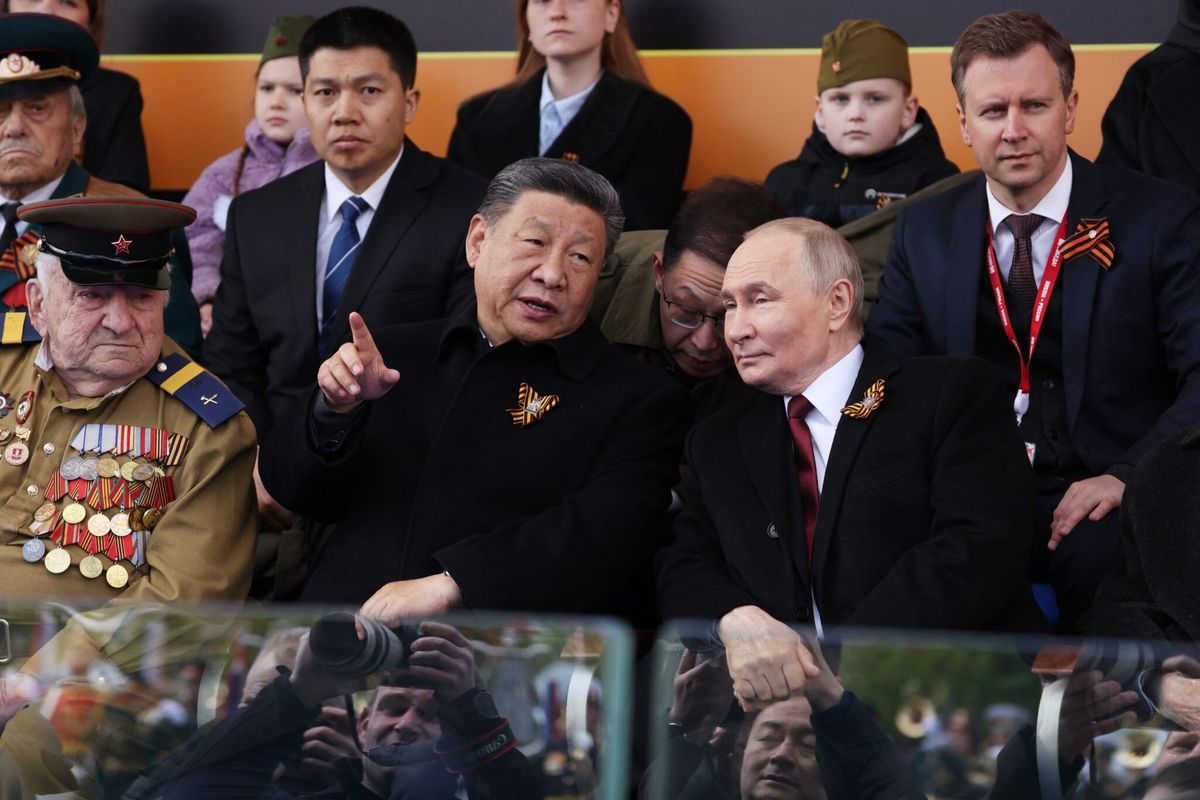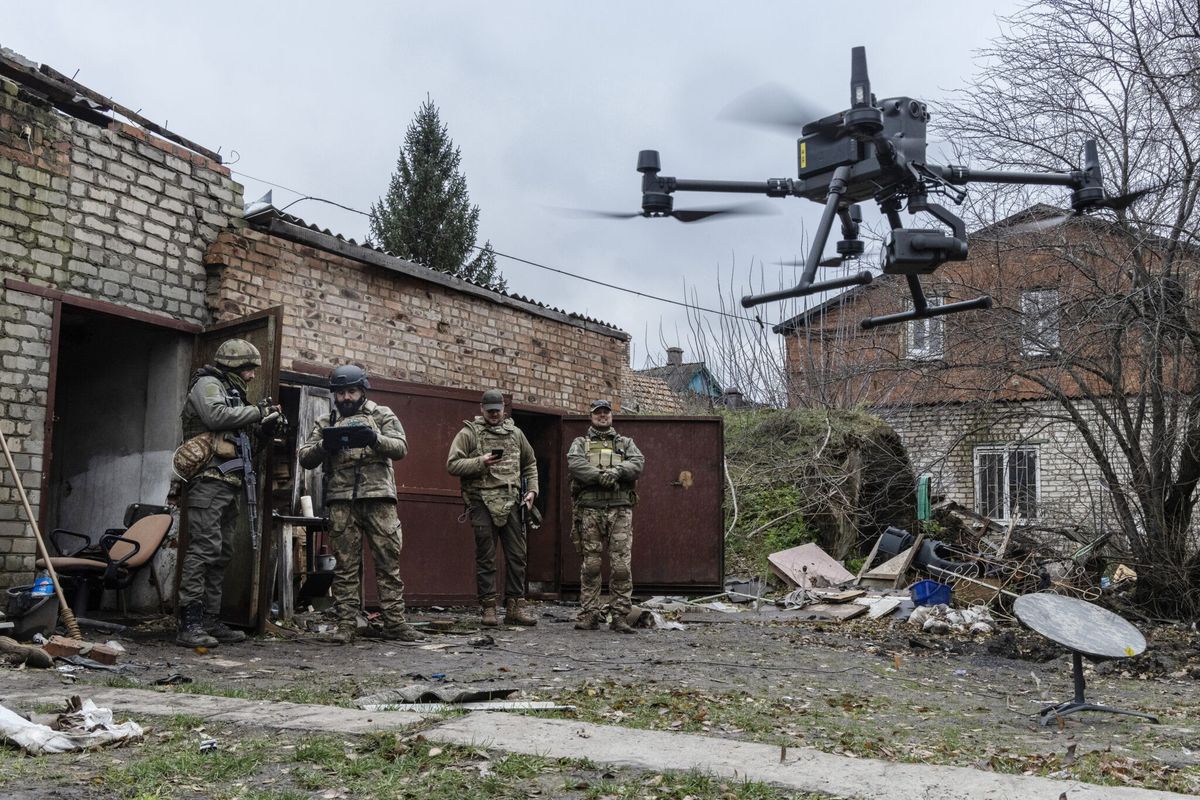SUBSCRIBER+EXCLUSIVE REPORTING — As Russian troops closed in on the city of Avdiivka last week, Ukrainian forces were hunkered down and making life-and-death calculations with their dwindling stocks of ammunition: Should they fire more artillery shells to fend off the Russians - or guard their stocks before they ran out? In the end, Russia’s firepower proved too much for the Ukrainians; the Russians gained two footholds in Avdiivka, forcing commanders to abandon a position their troops had held at the cost of thousands of lives. Late last week, they ordered a full retreat from the battered city, handing Russia its most significant battlefield victory in more than a year.
The loss of Avdiivka was perhaps the war’s most profound example of what National Security Advisor Jake Sullivan has called a “math problem” for Ukraine: the fact that the number of artillery shells its forces use in a given day has challenged the ability of Western supporters to keep up the supply. But with the fate of all U.S. military aid now up in the air, Avdiivka’s fall also presents a case study for what may follow.
Sulllivan said earlier this month that the U.S. was not focused on a “Plan B,” because, as he put it, “We believe we still can and will deliver the aid for Ukraine.” But a Plan B is very much on the minds of Ukrainians, who are working to jump-start their own domestic production of weapons, and hoping that European countries will help fill the gap should the American supplies dry up. The U.S. has been far and away the most generous supplier of military aid since the war began, and the current aid bill would include more than $60 billion in new assistance for Ukraine.
Some Ukrainian soldiers have reportedly been checking their phones for updates from Washington, and for good reason; while the aid debate drags on, lives are being lost and the balance of power is shifting, as better-equipped Russian units advance unhindered by artillery fire, and Ukraine’s weakened air defenses mean more Russian rockets, drones and fighter jets can reach Ukrainian civilians.
“We’ve all seen the terrible stories in recent weeks: Ukrainian soldiers out of artillery shells, Ukrainian units rationing rounds of ammunition to defend themselves,” President Biden said on February 8, after the Senate passed its version of the aid bill and sent it to the House.
Dmitri Alperovitch, Executive Chairman at Silverado Policy Accelerator and a Senior Fellow at the Harvard Kennedy School, told The Cipher Brief that an end to American support would open the way for a Russian victory in Ukraine.
“The Europeans do not have the industrial-base capacity to compensate for both the quantity as well as specific weapons that we’re providing to Ukraine and won’t have that for many years, even if they start building it now,” Alperovitch said. “There is no substitute for U.S. aid if you want to avoid a collapse of Ukrainian front lines.”
How long can Ukraine continue its fight without fresh supplies from the U.S.? Ukrainian and American officials haven’t revealed precise numbers on the existing pipelines of arms and ammunition supplies, but an end to U.S. aid would hit Ukraine’s military in three critical areas: long-range missiles, air defenses and those badly-needed artillery shells.
Coming soon: D-Day for air defense
Analysts say that if the U.S. aid bill fails, the first casualty for Ukraine will likely be its supply of air defense missiles that protect the country’s cities. Bradley Martin, Director of the RAND Corporation’s National Security Supply Chain Institute, has studied the pipeline of military aid to Ukraine and says there’s a short window before things will get very hard for major urban areas.
“Running out of air defenses is really the problem now - several weeks to a month before they run out,” Martin said in an interview with The Cipher Brief. ”That’s given that there are still things in the pipeline.”
While ammunition is critical for troops across the frontlines, Ukraine’s air defense system has been a quiet hero of the two-year-long war. Time and again, Russia has sent barrages of missiles and drone weapons at major Ukrainian cities, and more often than not Ukraine has managed to pick those weapons out of the skies and avert disaster.
Much of that success has been due to U.S. aid, Fred Kagan, a scholar at the American Enterprise Institute, wrote recently for the Institute for the Study of War. He noted that Western-provided air defense systems had stopped dozens of aerial attacks on Kyiv and other Ukrainian cities. “If the West stopped providing such systems,” Kagan wrote, “the Russians would almost certainly begin such raids with catastrophic consequences for Ukraine.”
U.S.-supplied air defense missiles aren’t the only ones available; Ukraine has what one analyst called a “menagerie” of air defense systems capable of blocking Russian cruise missiles and rockets. For that reason, logistics expert Mark Cancian, a senior adviser to the International Security program at the Center for Strategic and International Studies in Washington, is less pessimistic.
Cancian told The Cipher Brief that Ukraine is likely hoarding its remaining air defense missiles to protect its most exposed targets, including the capital Kyiv, hedging against a U.S. cutoff and the likely slow timeline for deliveries from European allies. But Cancian says Ukraine probably has enough missiles for only another two months before it gets dangerously squeezed.
Longer-range missiles
Another key American delivery to Ukraine has been missiles that travel dozens, even more than one hundred miles to attack distant Russian targets. Unlike artillery shells, these weapons are important less for their volume than their individual power. One strike can have a tremendous impact; witness the attack this week that killed dozens of Russian soldiers in eastern Ukraine. The BBC’s Russian service reported the strike was carried out by a missile launched from a HIMARS rocket system provided by the U.S.
The White House is prepared to send more powerful and longer-range tactical missiles - known as ATACMS (army tactical missile systems) - to Ukraine if Congress approves the new funding package, according to NBC News.
The U.S. delivered a short-range version of the ATACMS last year after Ukraine pledged not to use them inside Russian territory. President Volodymyr Zelensky has since said that those weapons had “proven themselves” on the battlefield. The newer, longer-range missiles can pinpoint targets nearly 200 miles away.
Ukraine’s defense minister, Rustem Umerov, said the fall of Avdiivka was - among other things - a reminder that “long-range weapons are needed to destroy enemy formations”.
At last weekend's Munich Security Conference, Secretary of State Antony Blinken and his Ukrainian counterpart Dmytro Kuleba spoke about all three areas - “ammunition, air defense, [and] long-range capabilities” - and Kuleba called the ATACMS critical for Ukraine's defense.
“There is only one way to destroy Russian capabilities in Ukraine. It’s to hit deep into the occupied territories, bypassing Russian radio-electronic warfare and interceptors,” Kuleba said. “If you want to hit behind the lines, disrupt their logistics and supplies, destroy their depots of ammunition, you can do it only with long-range missiles,” he added.
What’s still in the pipeline
Other elements of American military aid won’t dry up for a while. Cancian noted that much of what was appropriated by Congress in last year’s aid package is only now being manufactured or drawn down from U.S. stockpiles.
“It takes about eight months from the time an aid package is announced for all of it to be delivered,” said Cancian. The last U.S. military appropriation for Ukraine was broken into monthly packages by the Defense Department.
While current deliveries of U.S. weapons and munitions are now at about $400 million a month, roughly a quarter of their peak last summer, there are still another eight months or so of arms deliveries in the pipeline, though the monthly amount will drop in the months ahead without a new appropriation.
The Pentagon is currently assembling elements of an already-budgeted aid package it announced in December. That includes roughly 30,000 155-mm artillery shells a month, some 150 Javelin anti-tank missiles per month, along with Hawk anti-aircraft missiles and replacement rockets and spare parts for the HIMARS system. The bulk of that package won't arrive until July or August.
“The flow of equipment will not end at once but go on for years,” Cancian told The Cipher Brief, but he added that without a new aid package, the Pentagon cannot allow any new drawdowns of its stockpiles. Some elements in the U.S. pipeline will dry up, others will dwindle, and Ukraine will find its ability to attack or even fend off an attack increasingly constrained.
“Ukraine can no longer conduct a counteroffensive,” Cancian said. By early summer, he added, Ukraine will struggle to fend off Russian attacks, and at some point soon, the front will collapse if there isn't another infusion of aid.
As for that ammunition “math problem,” the experts see trouble coming soon. That 30,000-shell-a-month delivery from the U.S. is months away and not nearly enough to support Ukraine’s daily use, and European pledges will also take months to reach the frontlines. On one hand, the retreat from Avdiivka and elsewhere along the 600-mile front lowers the demand for artillery; on the other, the ammo shortfall makes any new operations difficult.
“[The Ukrainians] are clearly not advertising how much they have, but I think we are talking about a matter of weeks before they are in serious trouble with the ability to continue operations,” Martin told The Cipher Brief.
“It’s not like they will be overrun,” he said. “It’s likely at that point they will have to be careful about rationing ammunition and defending the positions they hold.”
Read more expert-driven national security insights, perspective and analysis in The Cipher Brief because National Security is Everyone’s Business.












